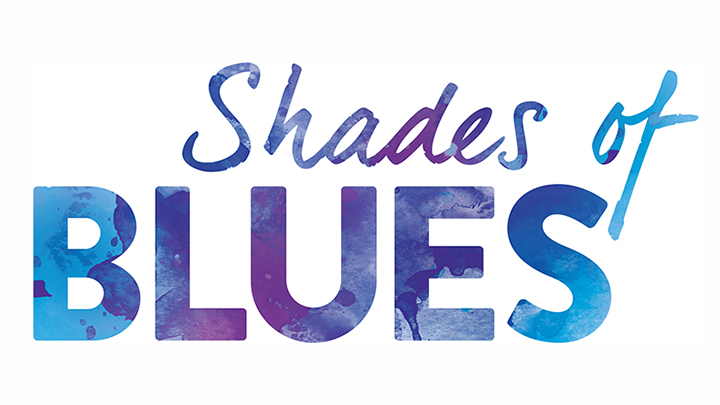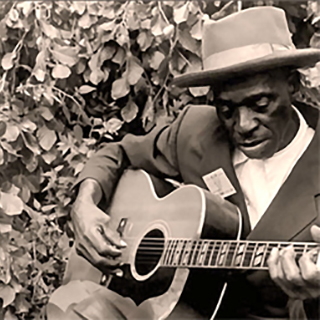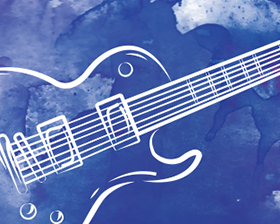By Ken Avis
Washington, DC, has been the home of many influential people in many fields—and that includes blues music. Here are some of DC’s very own blues icons who have advanced this far-reaching and ever-shifting genre.
Enjoy our DC Blues Spotify Playlist!
Jelly Roll Morton
Raised in New Orleans, Morton was a pianist, singer, and infamous troublemaker who claims to have invented jazz through his combination of blues and ragtime.
Always a controversial figure, Morton’s career had many ups and downs. During the 1930s he ran a DC nightclub called The Jungle Inn on the site next door to Ben’s Chili Bowl. He was the club’s manager, bouncer, barman, and resident pianist until leaving DC in 1938 after being stabbed in an argument.
Recordings of his interviews and music with Alan Lomax for the Library of Congress provide an invaluable window on blues history and the life of musicians during the first half of the 20th century. Morton was honored with a Grammy Lifetime Achievement Award in 2015.
Duke Ellington
Born in DC at the turn of the 20th century, Edward Kennedy “Duke” Ellington is without doubt DC’s most celebrated musical legend, with a career spanning more than 50 years and more than 1,000 recordings.
Ellington was inspired by the ragtime and blues piano players in the pool halls, cafés, and bars of DC where he played until moving to New York in the 1920s to form the house band for Harlem’s Cotton Club. His popularity was such that he toured in Europe in the 1930s and went on to break new ground as a composer, arranger, and bandleader, writing some of the most popular standards of jazz. Ellington incorporated blues into his compositions along with many other styles and always refused to be categorized.
In DC, his name is remembered through the Duke Ellington School of the Arts, Duke Ellington Park, and, more recently, the Ellington Apartments on U Street, an area popularly known as DC’s jazz district. Ellington received many awards during his lifetime and was the first African American whose image appeared on a US coin.
Ruth Brown
If ever a singer could be said to have covered all the shades of the blues, Ruth Brown would be the leading contender.
Moving to DC from Virginia in 1945, Brown was signed to Atlantic Records in 1948 by Ahmet Ertegun, who had seen her at U Street’s Crystal Caverns. Brown adapted her vocal style to the emerging R&B style. The switch worked, leading to so many 1950s hits that Atlantic Records became known as “The House that Ruth Built.”
Through the 1960s, Brown continued to perform in theater and television, and she campaigned successfully for musicians’ rights in the 1970s. She was inducted into the Rock & Roll Hall of Fame in 1993 and the Washington Area Music Association Hall of Fame in 1997, and she received a Grammy Lifetime Achievement Award in 2016.
Skip James & Mississippi John Hurt
After many decades away from music, legendary bluesmen James and Hurt were rediscovered during the 1960s “acoustic blues revival” and they relocated to the DC area.
James was one of the most influential acoustic bluesmen of the 1920s but disappeared into obscurity after recording a number of songs in 1931—these songs were later covered and adapted by the legendary Robert Johnson and became staples of blues-rock in the 1960s. Hurt was a master of the Piedmont blues guitar style and collector of blues, gospel, and old-time songs. Playing the Newport Folk Festival in the early ’60s revived the careers of both musicians. In addition to recording and touring, the musicians could often be heard in the beatnik coffee shops of Adams Morgan.
James, who had arrived in DC in poor health, wrote and recorded “Washington DC Hospital Center Blues” based on his experience in the nation’s capital. Eventually he moved to Philadelphia where Eric Clapton gifted him a house. Clapton also ensured James received income due to him, which enabled him to pay hospital costs—all in appreciation of Clapton’s band Cream’s success with their recording of James’ song “I’m So Glad.”
Roy Buchanan & Danny Gatton
During the 1970s and beyond, Roy Buchanan and Danny Gatton were among the most admired guitar virtuosos playing blues-related music.
The guitarists had much in common. Both played the iconic Fender Telecaster guitar and mixed blues, jazz, and country music. Using just his guitar and his fingers, Buchanan created many of the sounds such as volume swells and “wah-wah” that, with the use of electronic effects, became the trademarks of rock players like Jimi Hendrix. Gatton’s ability to play any style of music and his fiery soloing attracted high profile guitar admirers from every genre.
Their skills were legendary and attracted many notable guitarists and fans to their DC club dates. Buchanan was a friend and mentor to Nils Lofgren, Bruce Springsteen’s longtime guitar player. Blues players such as Rory Gallagher, Eric Clapton, and Peter Green were known to have trekked out to see him play his residency gig at Crossroads, a bar in Bladensburg, Maryland. Meanwhile, Gatton picked up high profile fans such as Les Paul, Joe Bonamassa, Steve Vai, Vince Gill, and Albert Lee. Both guitarists remain legendary to this day despite their tragic and untimely deaths in the 1990s.


